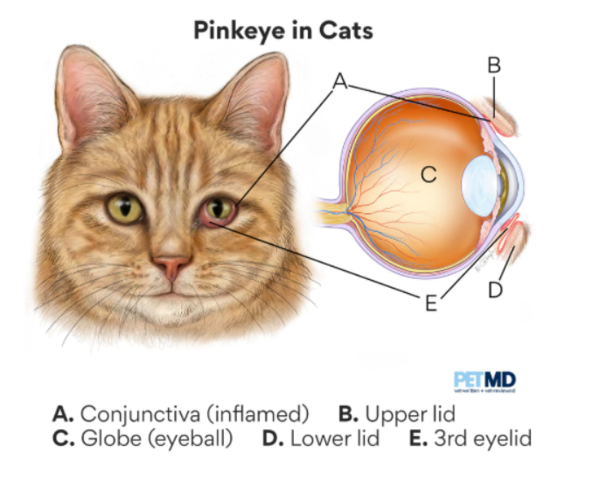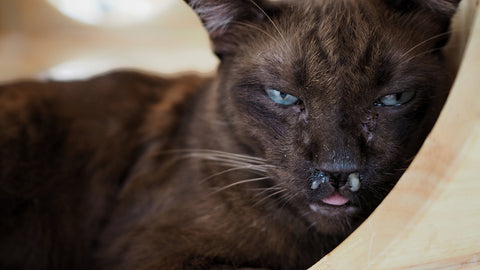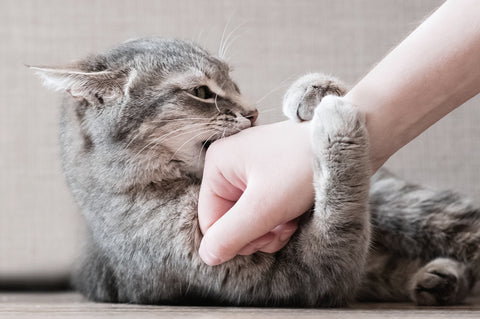You may find your cat is rubbing one of their eyes with a paw, or notice that their eye looks red and inflamed. This is a sign that your feline friend may be suffering from cat conjunctivitis. You may be asking yourself, “does my cat have pink eye?” Continue reading to find out more about cat conjunctivitis, also called pink eye—everything from how to recognize signs of this condition to what causes it and how to treat it.
Do Cats Get Conjunctivitis?
The simple answer is yes, all cats are susceptible to conjunctivitis, also referred to as pink eye. Pink eye is an inflammation of the conjunctiva, which is the thin mucous membrane that lines the inside of your cat’s eyelid.

No one cat breed is immune to cat conjunctivitis, nor is any breed more likely to get cat conjunctivitis than another. Conjunctivitis in cats is non-heritable, meaning that it’s not a genetic disease passed down from a parent.
Pink eye can occur in cats of all ages, though it is often more prevalent in younger cats. Older cats are less likely to get cat conjunctivitis, as their immune systems are more developed and they typically build up natural immunity to the condition over time. Younger kittens of the same litter, cats in shelters or other places where there are many cats in one place, or multiple cats who live and play together are all examples of how conjunctivitis can more easily pass from one cat to another.
Common Symptoms of Conjunctivitis in Cats
To help ensure the best possible outcome, it is always best to notice changes in your cat and seek treatment for an issue like conjunctivitis sooner rather than later. Let’s cover signs of the early stages of conjunctivitis in cats so that you know what to look out for.
Symptoms of pink eye include blinking excessively, squinting, or keeping one or more of their eyes closed. These are a natural response to the irritation and discomfort your cat experiences as a result of the infection. You may also see excessive watering/tearing, or even a cloudy, yellowish mucus in your cat’s eye. If your cat is constantly rubbing its eye, and you may notice patches of hair loss on the skin surrounding the eye.
Beyond these physical symptoms that you can see in your cat’s eye(s), your cat may exhibit signs of an upper respiratory infection, which include:
- Nasal Discharge
- Sneezing
- Your cat will become lethargic
- Decrease in appetite

If you notice any upper respiratory or eye symptoms, you should take your cat to your veterinary clinic as soon as possible. Cat conjunctivitis can spread from one eye to the other or to another cat in your home, so it is important to address it quickly and get your cat the treatment and relief that it needs.
Causes Of Conjunctivitis in Cats
There are two types of conjunctivitis: infectious and non-infectious.





